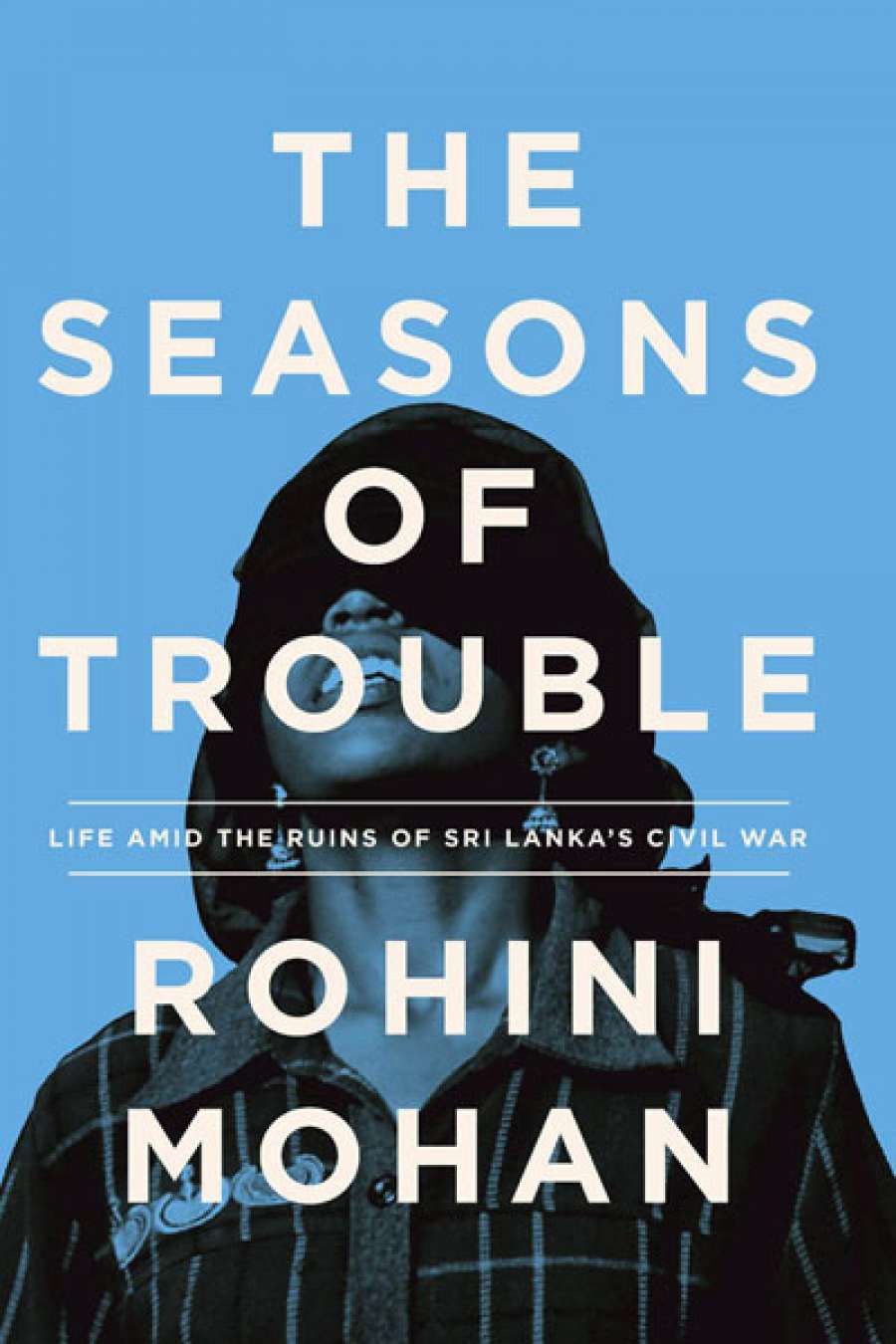
- Free Article: No
- Contents Category: Asian Studies
- Custom Article Title: Emily Howie reviews 'The Seasons of Trouble' by Rohini Mohan
- Review Article: Yes
- Article Title: Life amid the ruins of Sri Lanka’s civil war
- Online Only: No
- Custom Highlight Text:
In May 2009, Sri Lanka’s three-decade-long civil war came to an end with the government’s defeat of the separatist Liberation Tigers of Tamil Eelam (known as the Tamil Tigers). The long conflict had brought a range of horrific abuses: deliberate shelling of civilian areas; suicide bombing of civilian targets; enforced disappearances; rape; forced conscription, including child soldiers; and the use of civilians as human buffers. In 2011 a UN panel of experts made preliminary findings that these abuses were violations of international humanitarian law and human rights law and that some could even amount to crimes against humanity. This prompted the current international investigation into the allegations by the Office of the High Commissioner for Human Rights.
- Book 1 Title: The Seasons of Trouble
- Book 1 Subtitle: Life amid the ruins of Sri Lanka’s civil war
- Book 1 Biblio: Verso $32.99 hb, 256 pp
The Seasons of Trouble is a welcome shift in focus from debates over war crimes and their statistics – the dead, detained, disappeared, and widowed – to the real-life experiences of people living through the aftermath of the war. Understandably, the war has dominated public and intellectual discussion on Sri Lanka, but this has left too little room to understand the lives of people dealing with the war’s effects.
Based on extensive interviews with her subjects, Rohini Mohan’s narrative non-fiction tells the stories of three Sri Lankan Tamils finding their way through the familial, bureaucratic, security, and financial challenges of postwar life.
Mugil is a former child soldier and female Tamil Tiger cadre who flees with her family and thousands of other civilians in the final stages of the war. Sarva is a victim of Sri Lanka’s notorious ‘white van’ abductions, a corrupt criminal justice system, and of the failure of the rule of law to protect him from brutal and indefinite detention. His mother, Indra, must battle to find him in the maze of Sri Lanka’s prisons and black sites.
 LTTE emblem
LTTE emblem
Although Tamil experiences are her subject matter, Mohan does not whitewash Tiger abuses or delve into any sentimentalism for ‘the Movement’. As Mugil is displaced along with hundreds of thousands of other civilians during the final phase of the war, Mohan reports that the Tigers camped among the civilians, essentially using civilians as human buffers. Although the Tigers promised freedom and an end to war, Mohan notes that civilians would at times feed cadres and dress their wounds for more self-interested reasons – access to satellite phones and transport.
By conveying the characters’ stories, warts and all, the book successfully rises above simplistic narratives of victimhood, militancy, and nationalism. However, the most interesting contribution of The Seasons of Trouble is its insights into the ‘brooding silence’ that blankets Sri Lanka in the aftermath of the war. This springs in part from the high levels of fear, insecurity, and surveillance of the population, as reported by Navi Pillay following her visit to Sri Lanka in August 2013.
Mohan describes the loss of communal discussion: ‘In another time, men would have been sitting around in tea shops discussing these events, trashing politicians and sharing news. But this was the era of cameras and spies, so the tea sessions were replaced by brooding silence.’ Tamils must even grieve for their dead and missing behind closed doors. For in government eyes, ‘a Tamil memorial to loss or silent grief was deemed a travesty, as something unpatriotic’.
On a personal level, each of the characters keep secrets from their family, community, and the state. Their reasons are multiple and varied; shame, fear, self-preservation, and self-interest. Mugil decides not to surrender at the end of the war. Instead, she hides among the civilians so that she can raise her children while her husband, also an ex-Tiger cadre, is ‘rehabilitated’ along with 12,000 other former cadres. Mugil hides her past in combat and must shed not only her uniform but also the skills and feisty demeanour of female Tiger cadres. Mugil’s brother also endures rehabilitation after the war and battles with his feelings ofguiltfor having divulged the names of his comrades while being tortured.
Sarva’s secrets are not fully revealed until the end of the book, when he seeks asylum abroad. He is encouraged to speak, told that although the truth is dangerous in Sri Lanka, in his immigration interview it is lies that could get him deported. It is a powerful end to the book; the reader understands the full extent of what Sarva has been through and the courage needed to reveal himself.
Sarva’s predicament is particularly interesting from an Australian perspective, where thousands of Sri Lankans have sought asylum and many have failed because of inconsistency in their accounts of persecution. To understand the reasons for the characters’ secrets and silence is to illuminate the chasm between the lived experiences of asylum seekers and the clinical, rational expectations of the immigration process.
The Seasons of Trouble enlightens and challenges the reader. Mohan’s characters ring true. She does not present innocent victims or martyrs, but real people’s messy lives. In doing so she provides a great contribution, as the book’s title promises, to our understanding of life amid the ruins of Sri Lanka’s civil war.


Comments powered by CComment